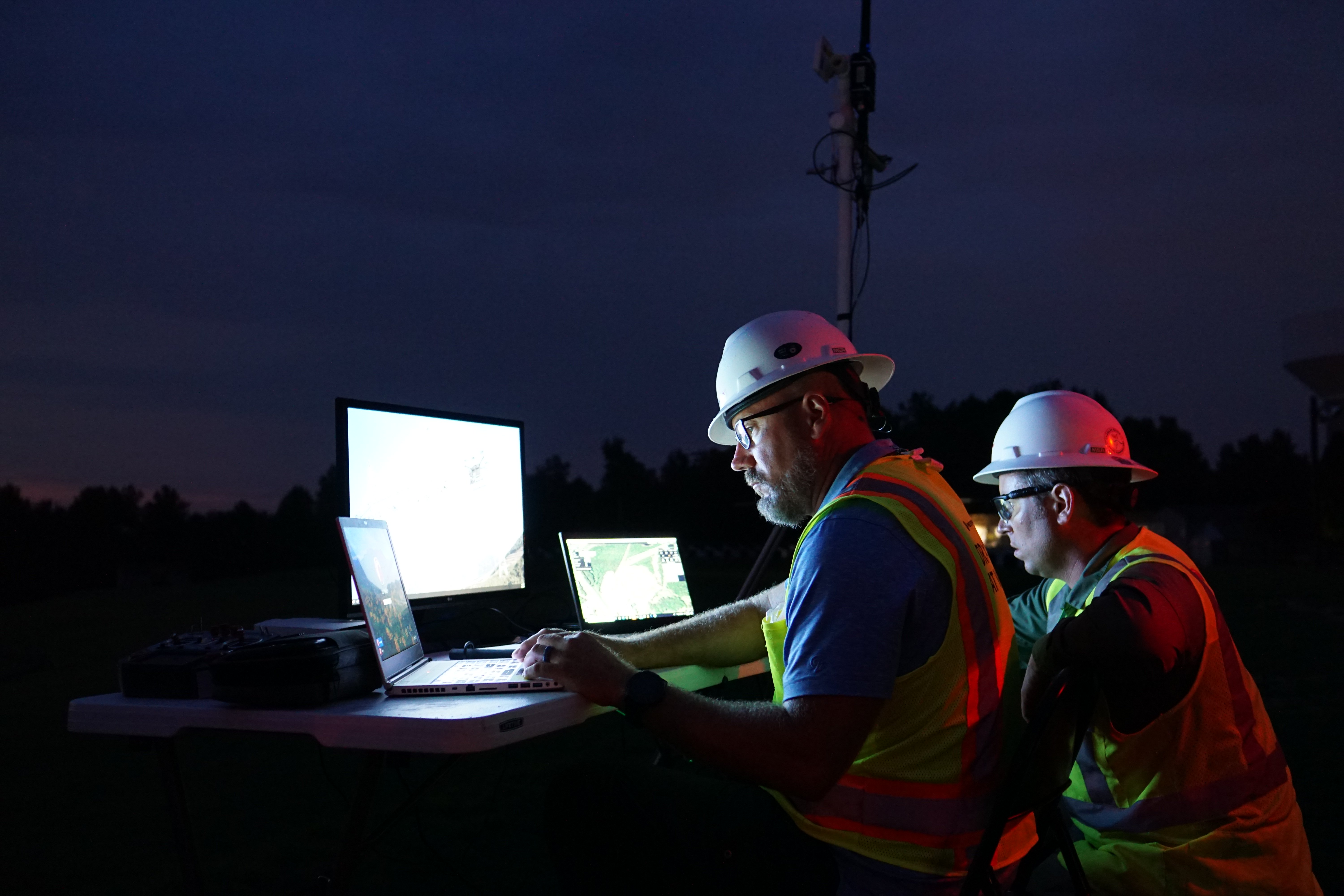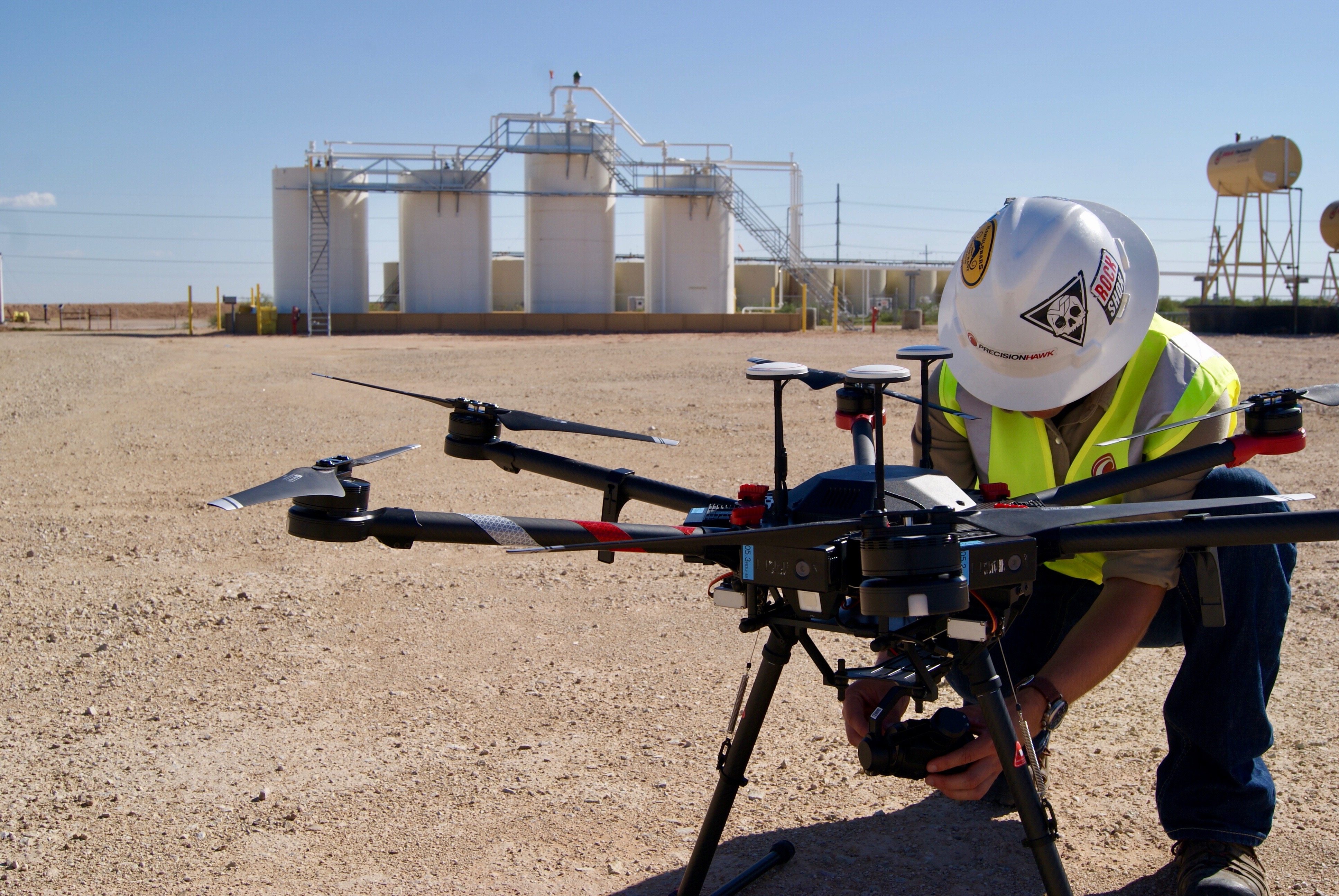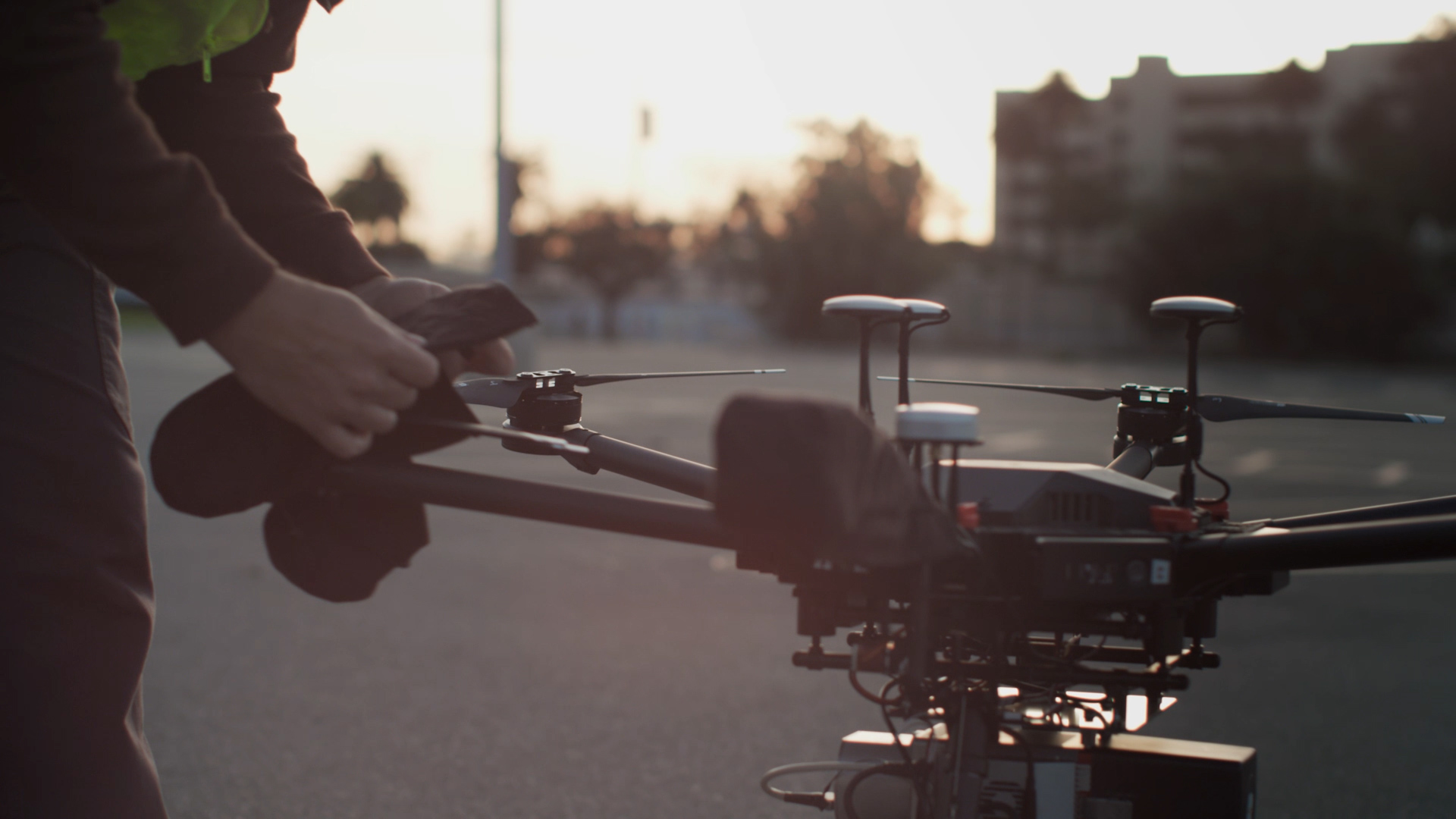The following is an excerpt from “Safe Always: Standard Operating Procedures for Drone Operations and Secure Data Collection,” a whitepaper that reviews the risks associated with drone-based data collection and the processes, policies, and procedures we apply to mitigate those risks. Download the whitepaper to learn how we help keep your data and your technicians safe.
Once we’ve cultivated a highly-trained, safety-oriented staff of drone pilots, the next step is to prepare them for a given mission. Because each client has different requirements and environmental situations, we train drone operators to use mission planning, safety briefings, test flights, and mission debriefs to enable them to respond safely and efficiently to different risks that might arise in the field. Below, we walk you through how we prepare our operators to follow tailored mission plans for each project.
Prior to a mission
Every project begins with developing a detailed mission plan. The person closest to the drone is most at risk, so the safety of the operator is paramount. Accordingly, we believe that developing mission plans that take the unique characteristics of each job into consideration is critical to maintaining safe operations. Some of the non-flight factors we plan for are the travel required to get to the data collection site, any walking over difficult terrain required, and both hot and cold temperatures. We also conduct pre-operation site visits and/or discussions with individuals with first-hand experience with the site where appropriate. This is in addition to carefully studying each project and making sure that we adhere to all regulatory and client concerns.

Safety briefing
Careful review informs every step of a day out in the field. Each morning on the job site begins with a safety brief, during which the team discusses the issues that are present for that specific day, in that specific location. This might include weather, wildlife, terrain, and other factors that could present challenges during flight. The review gives every crew member the opportunity to identify any hazards that they observe and call them to the attention of the team.
Any hazards observed are also reported to the Safety Management System. The safety brief includes a review of the plans in place to respond to any issues that may arise so that everyone can quickly respond to a situation and minimize the risk of injury or of damage to assets. As Matt Tompkins, PrecisionHawk Director of Flight Operations, explains, “Every potential incident has its own specific response plan.”
Execution
Although our crews are exceptionally well-trained and well-prepared for flight operations, we don’t rely exclusively on their preparation to see them through a contingency. We have clear, codified procedures that we distribute to our team members regarding how we fly, how we handle contingencies and emergencies, and how we delineate responsibilities and roles within a crew. If, in the midst of responding to a challenge, a pilot is unsure of the next step, they can quickly refer to their procedure cards as a backup guide.
On a given day, the pilot and sensor operator might conduct several flights, and the review process continues as the crew members are trained to conduct a mini debrief after each flight. This allows the team to take a deliberate pause between each flight to discuss any new issues that may have arisen and develop a plan to respond before proceeding to the next flight. It also gives them the opportunity to check in with each other on assessing the success of the flight.

Mission Debrief
Finally, the team conducts a more extensive end of day debrief, once again discussing and noting any concerns or issues. This measured, purposeful process of review helps ensure that we continue to operate safely and to expand our knowledge base. This is also why we also conduct bi-weekly safety meetings, as they allow us to share information with one another and keep everyone in the loop.
Harnessing Our Collective Experience for Continuous Improvement
PrecisionHawk capitalizes on its ten years and countless hours of UAV flight experience by continuously improving safety procedures and processes. As part of their training, our team members learn that we encourage and expect them to report all challenges, near misses, and incidents during each day of flight operations to our Safety Management System. This provides us with a reliable flow of information and ensures that we can regularly review and analyze issues encountered by our teams and determine if we need to make additions or adjustments to our procedures and to disseminate these procedures to all of our team members.
As our knowledge base continually expands, it allows us to identify new areas of potential risk and develop measures and procedures to mitigate those risks. As Bill Hanrahan, VP of Flight Operations and Hardware, explains, “We use a constant feedback loop and ‘lessons learned’ program to facilitate process improvement throughout the entire client engagement.”
Download our whitepaper “Safety Always: Standard Operating Procedures for Drone Operations and Secure Data Collection,” to learn more.


